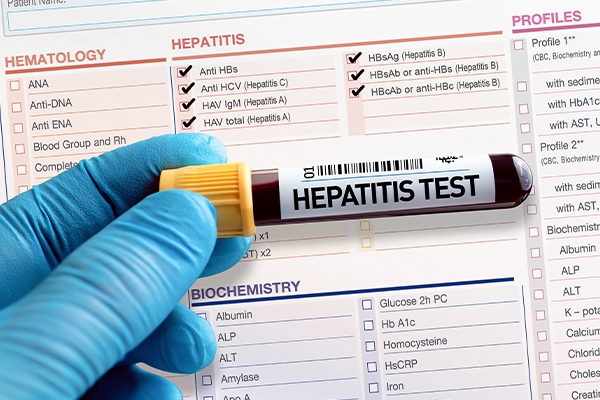Hepatitis B and C: Are They Still The Scariest?

Hepatitis, or liver inflammation caused by a viral infection or noninfectious factors, causes various health concerns. Although all five types of hepatitis (A-E) affect the liver, they differ in disease severity, geographic distribution, and preventative strategies. Are hepatitis B and C remain the most hazardous among them?
The
liver works to clean the blood, fight infections, and store energy. These vital
functions are jeopardized by hepatitis. It is even capable of physically
harming organs.
Of the five types of hepatitis viruses that exist, hepatitis B
and C have received quite a lot of attention because they can cause chronic
diseases, and their spread similarly (through bodily fluids such as sexual
intercourse or sharing needles).
About hepatitis B and C
The
majority of hepatitis B and C cases result in chronic illness. Cirrhosis of the
liver and liver cancer—both of which can be fatal.
According to the WHO, 354
million individuals worldwide have hepatitis B or C. However, most of these
remain beyond reach for testing and treatment.
The symptoms of all types of hepatitis such as fever, muscle pain, dizzy, nauseous, appetite loss, vomit, and pain in the abdomen. Gray feces, black urine, and jaundice (yellowing of the skin or whites of the eyes (sclera)) can also be indicators.
How about hepatitis B and C?
- Hepatitis B infects people unwittingly since it does not cause symptoms. This is why hepatitis B is known as a silent infection. The infection might linger for several years, stealthily destroy the liver, and cause unseen damage because it frequently shows no symptoms.
An infected person may inadvertently spread the virus through direct contact with blood or sexual contact. A blood test is the only way to determine if HBV is present.
Hepatitis B infection can be acute (lasting less than six months) or chronic (lasting longer than six months). Acute hepatitis B patients seldom acquire chronic hepatitis B.
- Hepatitis C in the body also seems
"invincible," making individuals oblivious to its presence. It
could be because it does not induce symptoms or because the symptoms are
frequently misdiagnosed as flu symptoms.
Hepatitis C virus (HCV) is easily transmitted through contact with contaminated blood, sexual contact, and needle sharing (including unsterile tattoos, piercings, and acupuncture). Infected moms are also at risk of passing the virus on to their newborns.
Acute hepatitis C often progresses to chronic hepatitis, as evidenced by the absence of symptoms, resulting in the disease going undetected. Only 15% of all hepatitis C cases are symptomatic. A blood test is the only way to establish the presence of HCV.
Prevention

Due to the WHO, immunization, diagnostic tests, medicines, and education can save approximately 4.5 million premature deaths in low- and middle-income countries. All WHO member nations will collaborate to reduce new cases of hepatitis infection by 90% and fatalities by 65% between 2016 and 2030.
Vaccination
helps protect against Hepatitis A and B. Toddlers can receive the Hepatitis A
vaccine twice: with intervals of 6—18 months.
The hepatitis B vaccine is
administered four times within 24 hours after the baby's birth, at the ages of
2 months, 3 months, and 4 months of age. Booster can administered at the age of
18 months. Meanwhile, vaccinations for other forms of hepatitis are still in
the works.
Unlike hepatitis A, which can be transmitted via food and water, the hepatitis B and C viruses require greater awareness to prevent infection. Avoid infections, not sharing needles, and engaging in unsafe and unfaithful sexual intercourse.
Test for diagnosis

A blood test or serology is the simplest approach to determine the presence of the hepatitis virus. This test is designed to determine the existence of an immune response from antibodies (agents that fight infection) or antigens (related viruses).
Serological tests are classified into three types: rapid diagnostic tests (RDTs) or laboratory-based enzyme immunoassays (EIAs), chemiluminescence immunoassays (CLIAs), and electrochemiluminescence immunoassays (ECLs).
There is also a PCR test, a nucleic acid-based test (nucleic acid assay, or NAT), that can detect the presence of viruses. This test could indicate if the infection is active and if the person being examined would benefit from an antiviral. It can also indicate whether treatment should be discontinued.
Still incurable but treatable

Acute hepatitis B is incurable. For individuals with minor symptoms, healthcare experts normally urge rest, as well as proper nourishment and hydration. Meanwhile, people with severe symptoms are advised to seek medical treatment.
There are numerous treatments available for those with chronic hepatitis B. Medications have also been developed. WHO recommends HBV-specific antiviral agents that have been proven to be effective in suppressing HBV replication, delaying disease progression to liver cirrhosis, and lowering the risk of developing liver cancer and mortality.
Medical examination for liver disease, including treatment and monitoring; hepatitis A and B immunizations; alcohol screening and prevention; and HIV risk testing are among the treatments available to patients with hepatitis C.
Hepatitis B, hepatitis C, and HIV co-infection
HIV is frequently associated with hepatitis B and C. The interaction of these disease-causing viruses can have disastrous results. Not to mention that they spread in the same way—via the exchange of bodily fluids.
In persons who also have HIV, hepatitis develops faster and causes greater health concerns. The major cause of non-AIDS-related death among HIV patients is liver disease caused by HBV and HCV infection.
Our
health is our responsibility.
Therefore, let's raise awareness about how to
protect ourselves from HBV, HCV, and HIV infections. Adopt a clean lifestyle.
Consume healthful foods. Avoid the risky interchange of bodily fluids.
If you have any questions about hepatitis, click on WhatsApp.



